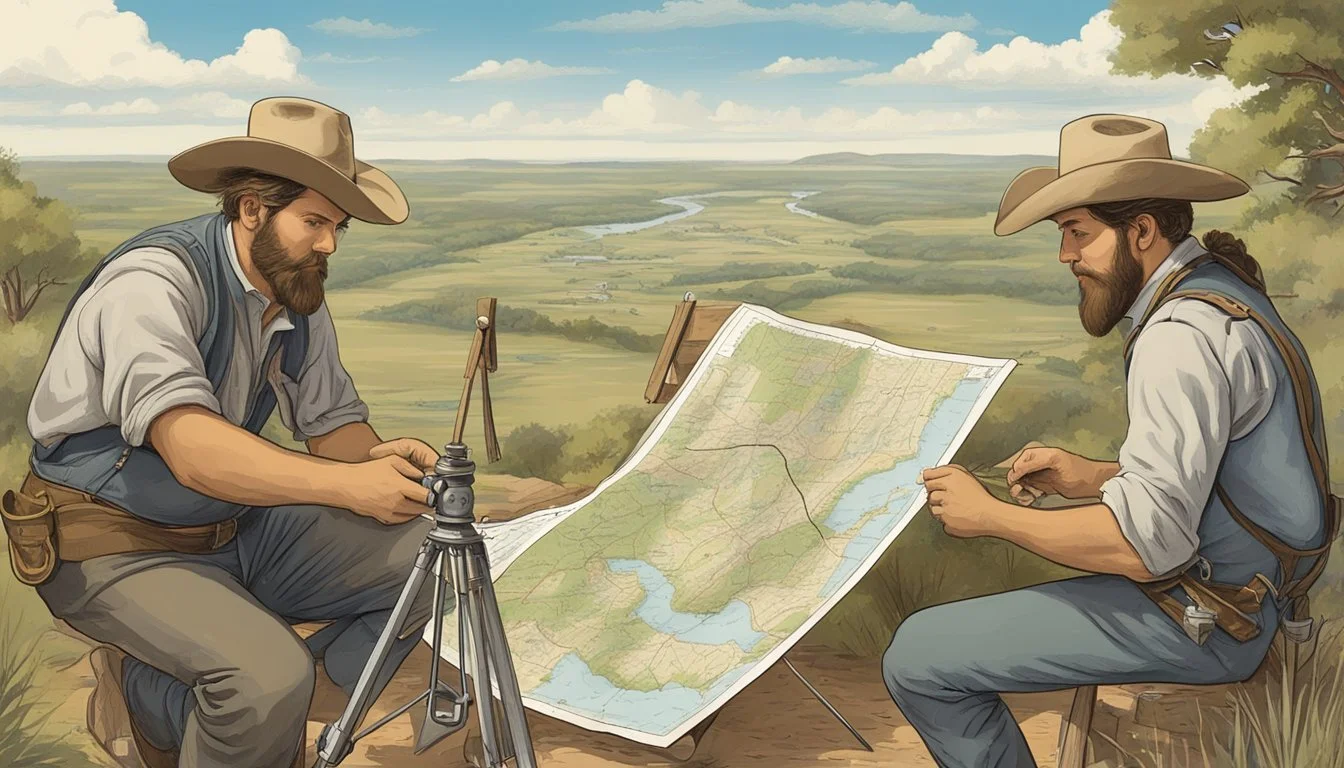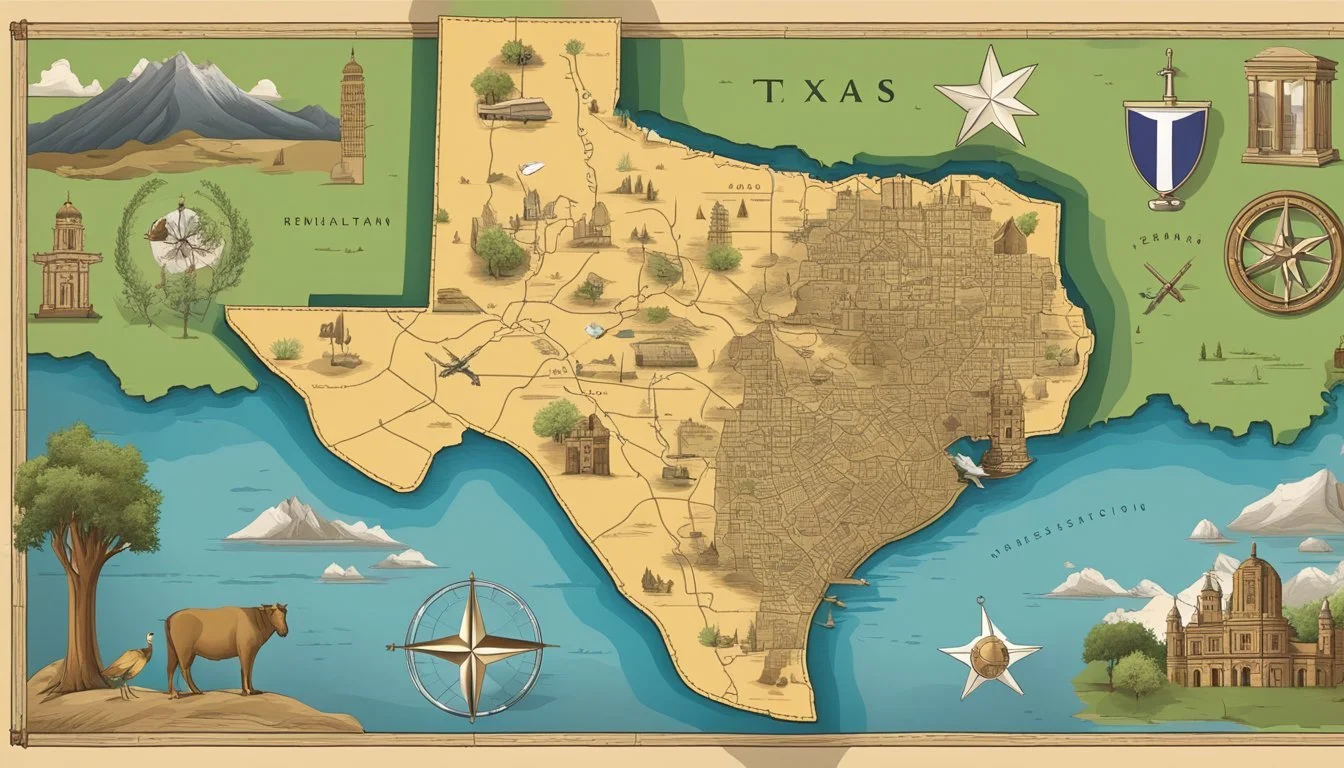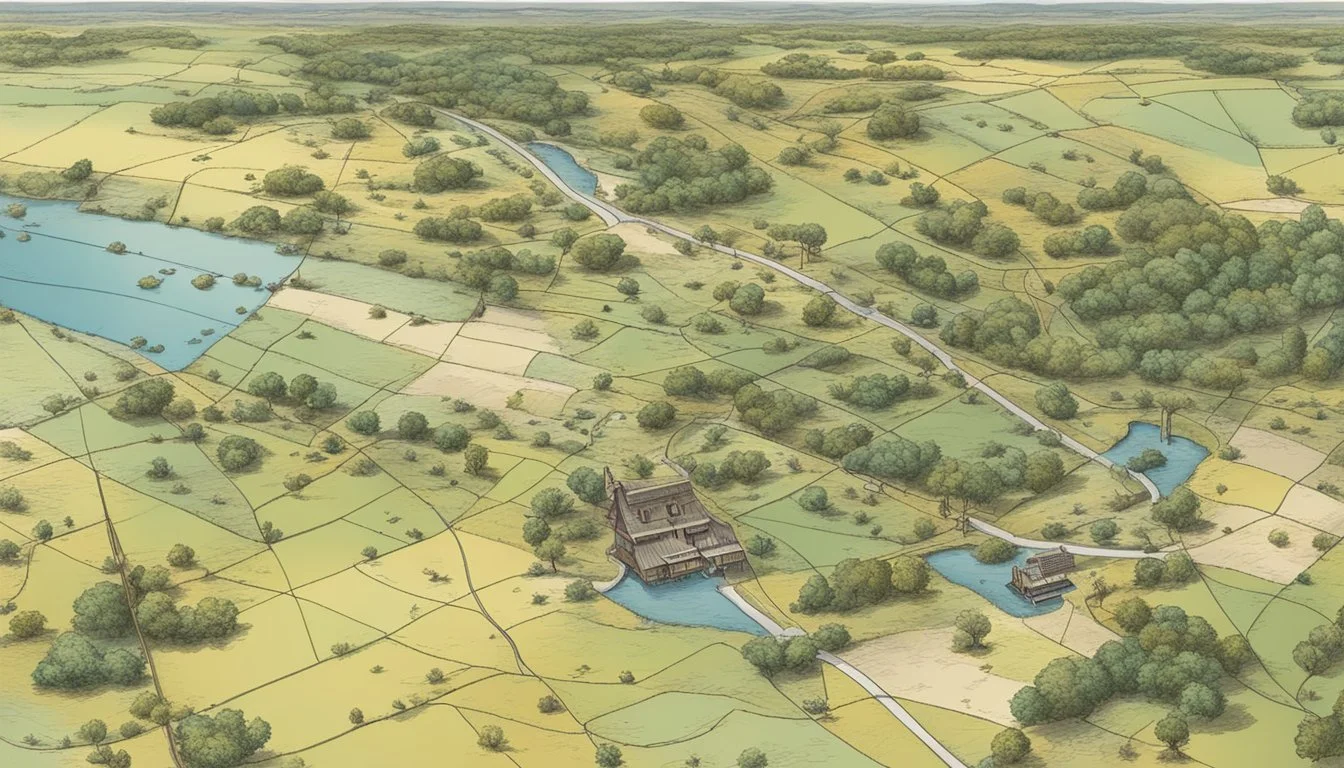German Texan Contributions to Texas Cartography and Surveying
An Historical Insight
German immigrants have long been recognized for their substantial contributions to the cultural and socioeconomic landscape of Texas. Their influence stretches back to the early 19th century when large numbers of Germans, seeking opportunities and freedom, began settling in the region. Among their many contributions, the role of Germans in Texas cartography and surveying stands out as a testament to their meticulous work and dedication to shaping the land they called their new home.
Mapping and surveying were crucial for the development of Texas, especially considering its vast terrain and the complexity of land claims. German Texans, with their expertise, played an instrumental role in the precise surveying of land boundaries and the creation of detailed maps. Their influence in this field supported the orderly settlement and development of Texas, paving the way for efficient land utilization and planning.
As surveyors and cartographers, German Texans not only contributed practical skills and knowledge but also introduced innovative methods and techniques that enhanced the accuracy and quality of maps. Their work provided valuable information for settlers, landowners, and government officials, helping to outline the state's physical and administrative boundaries. These critical contributions not only laid the groundwork for modern cartographic practices in Texas but also helped integrate German Texans into the broader tapestry of Texan society.
Historical Background of German Texan Migration
In the mid-19th century, a considerable number of Germans sought a new beginning in Texas, influenced by economic, political, and social pressures in their homeland. The migration to Texas can be broadly attributed to the allure of abundant land and the promise of prosperity.
The Adelsverein, formally known as the Verein zum Schutze deutscher Einwanderer in Texas (Society for the Protection of German Immigrants in Texas), was established to support the settlement of Germans in the region. This society was instrumental in organizing and funding the transatlantic migration and played a pivotal role in establishing German communities in Texas.
Key Figures: Notable among the early settlers was Friedrich Ernst, often called the "Father of German Immigration to Texas". His letters home, describing Texas as a land of opportunity, were published as "Reise nach Texas" (Journey to Texas) and inspired many to emigrate.
Primary Settlements: German influence became particularly strong in central Texas, with the establishment of towns like New Braunfels and Fredericksburg by the Adelsverein. These settlements served as cultural hubs where German heritage was maintained and celebrated.
Immigration Waves: Between 1844 and 1847, more than 7,000 Germans arrived in Texas. While some stayed in urban centers like Galveston, Houston, and San Antonio, others ventured into the rugged Texas Hill Country, leaving an indelible mark on the cultural landscape.
The immigrants' skills in various trades, including cartography and surveying, were vital in mapping the region and securing land for new communities. German Texans contributed to the state's development with their expertise and fostered a unique blend of Texan and German culture that persists to this day.
Contribution to Texan Cartography
German Texans have made significant contributions to the field of cartography in Texas, influencing the early mapping techniques and the detailing of county boundaries and landscapes.
Early Mapping Efforts by German Texan Settlers
German Texan settlers brought with them a tradition of detailed cartographic work. They began their contributions in an era when Texas was a mosaic of undelineated terrain. It was common for these settlers to chart their own lands as well as communal areas, often creating the first maps of regions that would later become central to the identity of Texas. In Gillespie County, settlers contributed to early mapping efforts, with the Texas General Land Office utilizing these maps to establish more accurate county boundaries and land grants.
The Influence of German Surveyors on Texas Maps
German Texan surveyors played a key role in the development of cartographic materials in Texas. Their influence extended to the overall accuracy and reliability of Texas maps, especially in delineating counties like Tarrant and Washington County. Their precision in surveying helped lay the groundwork for subsequent land transactions and development. The Texas German dialect and cultural knowledge transferred by German Texans also left an imprint on local place names and terminologies reflected in the maps of the period.
Friedrich Ernst and the 'Reise nach Texas'
As one of the notable figures in Texan cartography, Friedrich Ernst contributed significantly through his work, 'Reise nach Texas'. Documenting his journey from Germany to Texas, Ernst provided not only narratives but also sketches and maps detailing his experiences and observations. These documents were among the earliest forms of cartographic evidence that showcased the landscapes and environments of Texas through the eyes of a German settler. His work assisted in encouraging further German immigration, and this influx resulted in a richer, more diverse cartographic history for the state.
Photographs and detailed surveys from the era, archived in various institutions like the Texas General Land Office, provide a window into the meticulous work of German Texan cartographers. Their combined efforts were pivotal in transitioning Texas from a land of vague frontiers to one of clearly marked counties and properties.
Surveying the Texan Terrain
In the development of Texas, German-Texans played a significant role, applying their expertise in surveying to map out agricultural prospects and ranching boundaries effectively.
German Influence on Agricultural Surveying
German immigrants who settled in Central Texas significantly contributed to the agricultural surveying of the region, bringing European expertise to the Texan landscape. They meticulously charted the fertile soils of the Hill Country, allowing for optimized cultivation strategies and efficient land use. Their precise techniques helped establish robust farming sectors, which became crucial to the state's economy.
Ranching and Livestock Territories Demarcation
With the emergence of ranching as a pivotal industry, German-Texans were instrumental in the demarcation of livestock territories. Their attention to detail in the surveying process ensured clear boundaries were established, preventing disputes and fostering the growth of the renowned Texan livestock industry. Through the use of systematic surveying tools and methods, these early settlers effectively shaped the sprawling ranches that would become iconic to Texas's identity.
Cultural Impact on Texas
German Texan communities have notably shaped the cultural landscape of Texas through the establishment of cultural centers, support for their language and literature, and the integration of their traditions into the wider Texan society.
German Texan Cultural Centers and Societies
Fredericksburg and New Braunfels stand as prominent legacies of German Texan influences, fostering a sense of cultural identity and heritage preservation. These towns host a plethora of societies dedicated to maintaining German customs, such as San Antonio's German Club and The German-Texan Heritage Society. These organizations play a critical role in sustaining the historical narrative and cultural relevancy of the German influence in Texas that began in the 1800s.
Promotion of German Language and Literature
German language and literature hold an esteemed place in Texan culture, with efforts to promote these elements consistently present. Various institutions and events, including book clubs and literary societies, concentrate on German prose and poetry. The importance placed on German language is evidenced by its usage in educational settings and community interactions, ensuring its continuous transmission among generations of German Texans.
Integration of German Traditions in Texan Society
German-influenced events such as Saengerfest, Oktoberfest, and Wurstfest highlight the fusion of German traditions into Texan society. Specifically, Wurstfest in New Braunfels is a pivotal celebration, drawing over 100,000 attendees to enjoy traditional German sausage, beer, and music. These festivals not only serve as social gatherings but also platforms for the dissemination of German culture, showcasing the culinary craftsmanship through delectable food and beer, as well as the vibrant musical heritage.
German Texans during Conflicts
The significance of German Texans in historical conflicts, particularly during the Civil War and World War I, reflects their complex relationship with broader societal trends and government policies that directly impacted their community.
Civil War and German Texans
During the Civil War, German Texans found themselves in a precarious position. Texas, a Confederate state, saw many Germans face conflict over their Unionist sympathies. Despite a general desire to avoid conflict, sizable numbers were drawn into the war, often on the side of the Confederacy due to external pressures. A notable figure was Admiral Chester W. Nimitz, a Texan of German descent, though his service came later during World War II.
World War I and German American Identity
World War I marked a period of heightened tensions for German-Texans as their loyalty to the United States was often questioned. The anti-German sentiment led to prohibition against the German language and culture. Notably, the Texas Legislature passed House Bill 304 in 1919, which banned German language instruction in public schools. German-Texans who critiqued the war or refused to buy Liberty Bonds sometimes faced violent retribution, including beatings and even murder. Despite these challenges, many German-Texans supported the war effort, demonstrating the duality of their American and German identities during this global conflict.
Preservation of Heritage
In preserving the legacy of German Texan contributions to cartography and surveying, archives and museums play a pivotal role, along with cultural events that serve to educate and celebrate this rich heritage.
German Texan Archives and Museums
Several institutions are dedicated to the conservation and display of documents, maps, and artifacts that signify the German influence on Texas surveying. The German Texan Heritage Society, located in Austin, manages extensive archival collections and a library holding valuable resources for researchers. The Sophienburg Museum and Archives in New Braunfels is another notable repository, focusing on the preservation of German immigrant history, which includes a wealth of cartographic materials.
The Institute of Texan Cultures in San Antonio also offers exhibits exploring German Texans' impact, with a strong emphasis on their surveying and map-making contributions in the state's development. These museums and archives not only safeguard historical resources but also provide educational programming to heighten public understanding of this facet of German Texan heritage.
Cultural Events and German Culture Month
Cultural celebrations and designated heritage months offer additional opportunities for the public to engage with German Texan history. German Culture Month, often celebrated in towns with a strong German legacy like Fredericksburg and New Braunfels, showcases a variety of events that bring to light the contributions of Germans to Texas, including aspects of surveying and mapmaking.
Events such as Oktoberfest in Fredericksburg and the Wurstfest in New Braunfels incorporate exhibitions that depict the history and influence of German culture in Texas. Universities throughout the state, including those in Houston and San Marcos, also host lectures and workshops during this month to educate students and the community on German Texan contributions to local cartography and history.
Conclusion
German Texan contributions to the field of cartography and surveying in Texas reflect a blend of meticulous European techniques with the demands of a new and challenging landscape. They were instrumental in mapping the expansive territories of Texas, applying their expertise to create more accurate and detailed representations. Their work facilitated the settlements and economic development of various regions throughout the state.
The precision and reliability seen in their cartographic endeavors were a byproduct of their extensive experience in surveying. They implemented systems that greatly improved the accuracy of land division, which was vital for the state's agricultural growth. The utilization of their skills proved to be a cornerstone in Texas's development, ensuring a more organized approach to the expansion of its frontiers.
German Texans showcased adaptability by integrating traditional methods with the environmental and social nuances of Texas. Their influence is still noticeable in modern cartography and surveying standards across the state. This fusion of heritage and innovation has left a legacy that continues to underpin the state's approach to land management and development.








